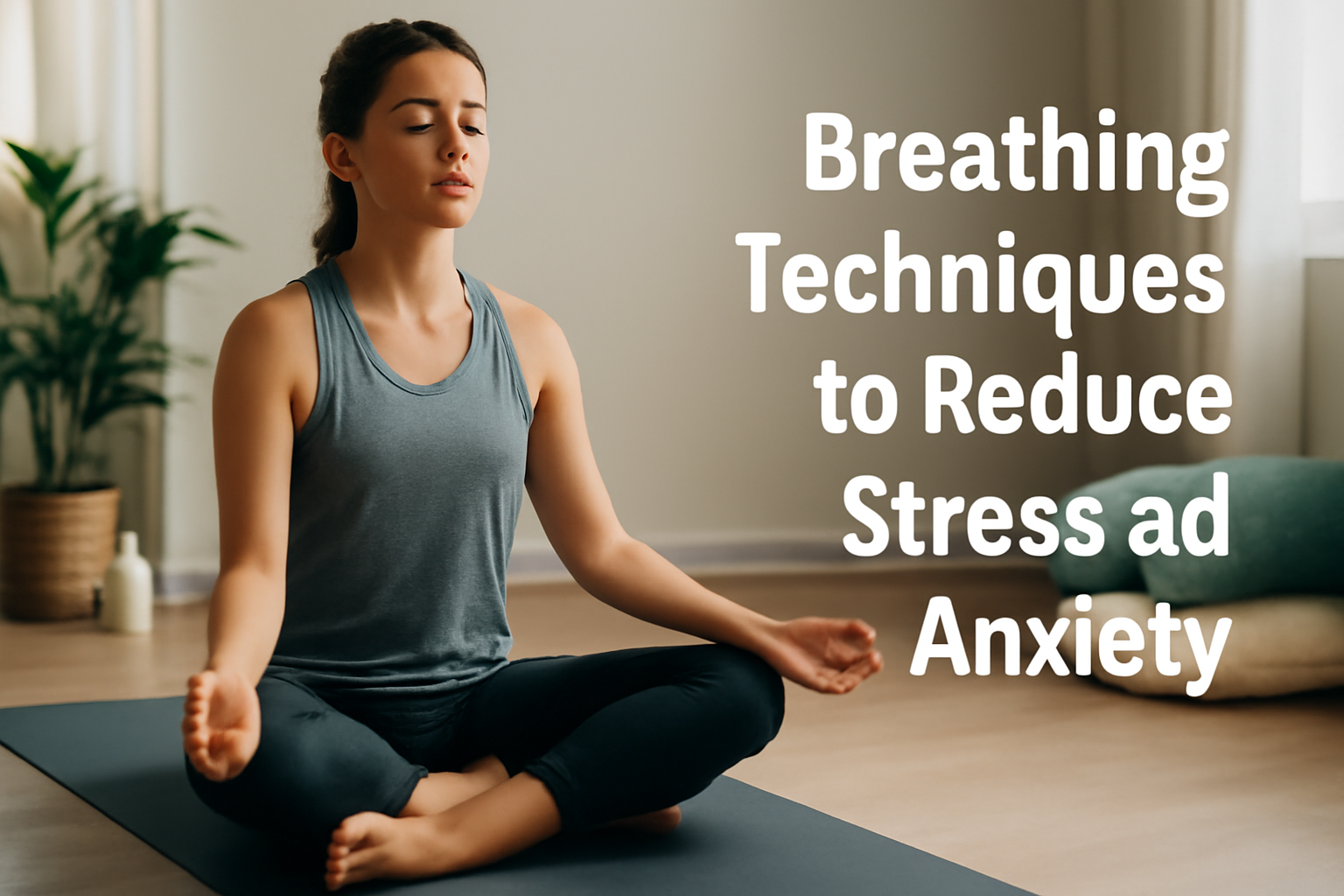In today’s fast-paced world, stress and anxiety have become common challenges that many people face. While there are various ways to manage these feelings, one of the simplest and most effective methods is through controlled breathing. This article explores several breathing techniques that can help reduce stress and anxiety, leading to a calmer and more balanced life.
Why Breathing Works
Breathing exercises activate the parasympathetic nervous system, which helps the body enter a state of relaxation. By focusing on your breath, you can interrupt the cycle of stress and anxiety, slow down your heart rate, and lower blood pressure, creating a sense of calm.
Benefits of Breathing Exercises
- Reduces Stress: Controlled breathing can calm the mind and reduce the physical effects of stress.
- Improves Focus: It helps clear the mind and enhances concentration.
- Lowers Anxiety: Deep breathing helps manage the symptoms of anxiety by relaxing the body.
- Promotes Better Sleep: Breathing exercises before bedtime can help you unwind and prepare for restful sleep.
- Improves Respiratory Function: Regular practice can improve lung capacity and breathing efficiency.
Popular Breathing Techniques
1. Deep Breathing (Diaphragmatic Breathing)
This technique involves breathing deeply into the diaphragm, allowing your lungs to fill completely. It’s a simple and effective way to reduce tension.
How to do it:
- Sit or lie down in a comfortable position.
- Place one hand on your chest and the other on your belly.
- Inhale deeply through your nose, allowing your belly to rise while keeping your chest still.
- Exhale slowly through your mouth, letting your belly fall.
- Repeat for 5-10 minutes.
2. Box Breathing (Square Breathing)
Box breathing helps regulate the breath and calm the mind, commonly used by athletes and individuals in high-stress environments.
How to do it:
- Inhale through your nose for a count of 4.
- Hold your breath for a count of 4.
- Exhale slowly for a count of 4.
- Hold again for a count of 4.
- Repeat for 3-5 rounds.
3. 4-7-8 Breathing
This technique involves longer exhalations to trigger relaxation, reducing anxiety and promoting a sense of tranquility.
How to do it:
- Inhale quietly through your nose for a count of 4.
- Hold your breath for a count of 7.
- Exhale completely through your mouth for a count of 8.
- Repeat 3-4 times.
4. Alternate Nostril Breathing (Nadi Shodhana)
This technique is often used in yoga to balance the body and mind, and it’s excellent for calming anxiety and stress.
How to do it:
- Sit comfortably with your spine straight.
- Using your right thumb, close your right nostril.
- Inhale deeply and slowly through your left nostril.
- Close your left nostril using your right ring finger and release your right nostril.
- Exhale slowly through the right nostril.
- Inhale through the right nostril, then close it and exhale through the left nostril.
- Repeat for 5-10 rounds.
5. Pursed Lip Breathing
Pursed lip breathing helps slow down the breathing rate and improves airflow, particularly helpful for stress reduction.
How to do it:
- Inhale slowly through your nose for a count of 2.
- Purse your lips (as if you’re blowing out a candle).
- Exhale slowly through your pursed lips for a count of 4.
- Repeat for 5-10 minutes.
When to Use Breathing Techniques
You can use these breathing exercises anytime you feel overwhelmed, anxious, or stressed. They’re especially useful during moments of tension, before bed to improve sleep, or even during workouts to enhance performance and relaxation.
Embrace the Power of Your Breath
Incorporating breathing techniques into your daily routine can have a profound impact on your physical and emotional well-being. By practicing mindful breathing, you can manage stress and anxiety effectively, improving your quality of life.

